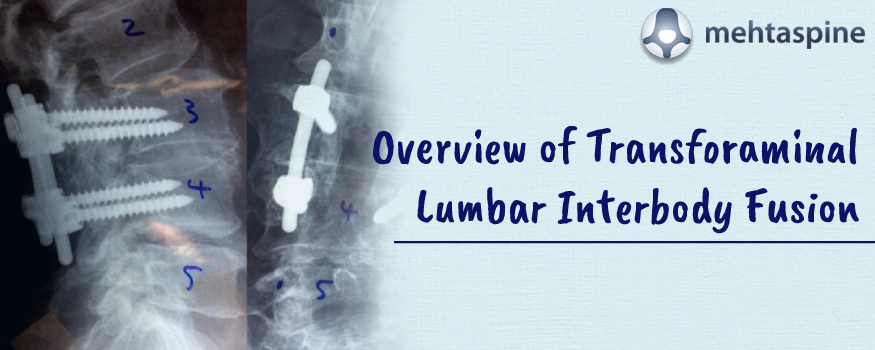Overview of Transforaminal Lumbar Interbody Fusion
Spinal fusion is the most effective treatment for patients who suffer from severe spinal curves (>45degres) of Scoliosis. A spine surgeon in UK straightens the spinal curve by fusing the vertebrae to enable single solid growth of bone.
As the fusion helps eliminate the movement between the spinal bones, spinal fusion especially lumbar fusion surgery is recommended for treating conditions like degenerative disc disease, disc herniation and even spondylolisthesis.
In this blog here we are going to give a brief overview of Transforaminal Lumbar Interbody Fusion, a contemporary and advanced method of spinal fusion surgery that is performed by expert spine surgeons in UK as a treatment option for a variety of spine conditions. Read on:
What is Transforaminal Lumbar Interbody Fusion (TLIF)?
As the name suggests TLIF is a spinal fusion that is performed on the lower back through foraminal openings. In simple terms, through an incision at the back of the spine one or more vertebrae in the lower back are permanently fused using a bone graft to stabilize the spine.
When is Transforaminal Lumbar Interbody Fusion (TLIF) performed?
TLIF is advised by spine surgeons in the UK for patients who are suffering from disc prolapse, spinal instability, nerve compression, disc herniation and even Spondylolisthesis. Performing TLIF helps stabilize the spine, prevents further movement and treats weakness in the back.
How is Transforaminal Lumbar Interbody Fusion (TLIF) performed?
Typically metal rods are used to hold the curved spine into place and bone grafts are placed between the vertebrae. These bone grafts over time grow and blend with vertebrae to enable the fusion of vertebrae to grow a single solid bone. This spinal fusion not only corrects the existing curvature of the spine but also stops the curve from progression solving the spinal curvature problem.
The step by step procedure of spinal fusion involves:
- Gaining access to the spine through a vertical incision in the back.
- Decompression of nerves in the lumbar region.
- Removal of the damaged disc with surgical equipment and stabilization of disc level with screws.
- Insertion of the Interbody cage, a metal implant packed with bone graft to enable bone growth into the disc space.
- Using screws and rods, and the bone graft the bone in the back are fused by the spine surgeon
What can a patient expect after Transforaminal Lumbar Interbody Fusion (TLIF)?
Patients are usually discharged after 3 to 5 days post-surgery. Physical therapy is recommended a day after the surgery and follow-up consultation with the spine surgeon is mandatory for several weeks post-surgery. Spine surgeons usually recommended a brace to keep the spine together and enable easy healing of the spine and patients are advised to limit the movements that may impact the spine for a set period. After the recovery, patients may experience a stiff back that is directly proportional to the number of vertebrae fused.
If you are looking for more information on Transforaminal Lumbar Interbody Fusion then we advise you to consult Children and Adult Spinal Surgeon Mr Jwalant S Mehta


